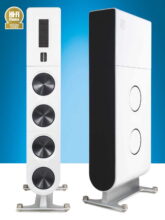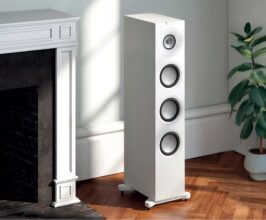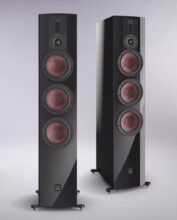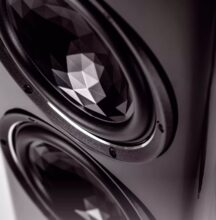Cantons Reference 9 Review
Cantons Reference 9 is the smallest speaker in Hessen’s top series, yet it is designed to sonically outperform even larger speakers.
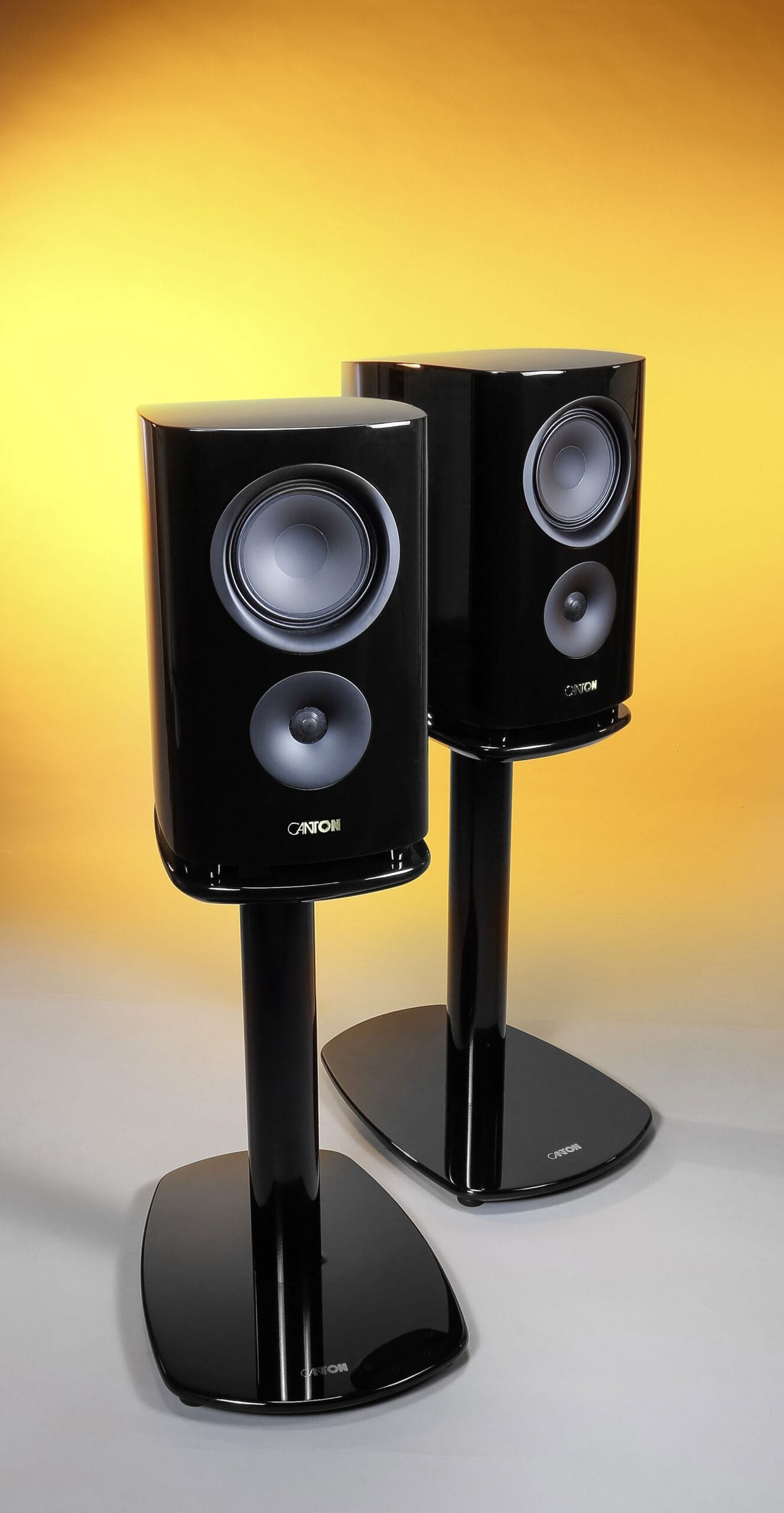
Modular systems are a practical solution for both manufacturers and customers. The use of similar components and a unified development concept leads to cost advantages in purchasing and manufacturing through higher production volumes, ultimately benefiting the buyer with lower prices. Canton, the traditional speaker specialist based in the Taunus region, has been known for decades for this clever and customer-friendly production method.
Big Bang at the Last High End
The presentation of the new Reference line during the last High End show was a sensation, surprising both visitors and the press. It radically broke away from the look of the previous series, featuring curves instead of edges, and boldly entered previously unexplored price ranges with the limited top model GS Edition, priced at around $55,000 per pair.
However, the model we selected for this test, the much more affordable compact 2-way bass reflex box Reference 9, priced at $4,000, not only grabs attention with its unique driver setup—woofer/midrange at the top, tweeter at the bottom—but also with the technology behind the drivers, crossover, and cabinet, and its impeccable craftsmanship.
Let’s start with the visible—a mirror-smooth, 12-layer lacquered surface of the enclosure built without hard edges. Canton and many other manufacturers believe that this cabinet design reduces diffraction effects and optimizes even sound radiation. The downside is that it requires computer optimization and makes production more complex, time-consuming, and ultimately more expensive than standard cabinet construction.
For the first time, we find the Bass Guide, a feature known from larger Canton models, positioned under the box—a slanted platform that directs the bass reflex port, allowing easy placement on a shelf or sideboard.
The internal resonance-reducing braces are not visible, but their shape, thickness, and placement were also optimized with computer assistance. Nowadays, manufacturers do not rely on pure inspiration or trial-and-error when developing such complex systems. This approach applies not only to the cabinet but also to the crossover, which distributes tasks precisely to each driver. High-quality, consistent components are essential for maintaining production consistency.
Interaction Is Key
One of the primary goals of head developer Frank Göbl has long been to achieve consistent sound dispersion across all Canton speakers. This requires several elements to work together seamlessly.
The drivers must be optimized from the outset, the cabinet shape must support this aim, and the asymmetrical design of the tweeter’s faceplate should also play a part. The crossover, with its clever combination of acoustic and electrical slopes of up to 36 decibels, ensures that the drivers operate only in a range where they produce even sound dispersion, completing the goal.
Canton speakers frequently surprise with their impressive bass depth, given their size, and their balanced blend of low distortion, clarity, and rich bass response.
A long-standing Canton technique is the DC filter, which sharply cuts frequencies below the driver’s resonance point, protecting the bass from unnecessary strain caused by excessive movement.
Exclusive Drivers: Ceramic and More
Ceramic drivers have been around for over 20 years. While some praise this material, others find it challenging to control sonically. The reality is that many speakers sound excellent with ceramic drivers, while others do not.
For the midrange/woofer, Canton saw an opportunity to improve membrane stiffness by adding tungsten and undergoing a lengthy oxidation bath process, slightly increasing the weight. According to Canton, the specially designed multiple suspension and powerful magnet compensate for this, even improving efficiency. The tweeter, to maintain a minimal moving mass, did not include tungsten but received an asymmetrical flange to optimize its sound dispersion. For aesthetics, two separate driver covers were used instead of a single cover.
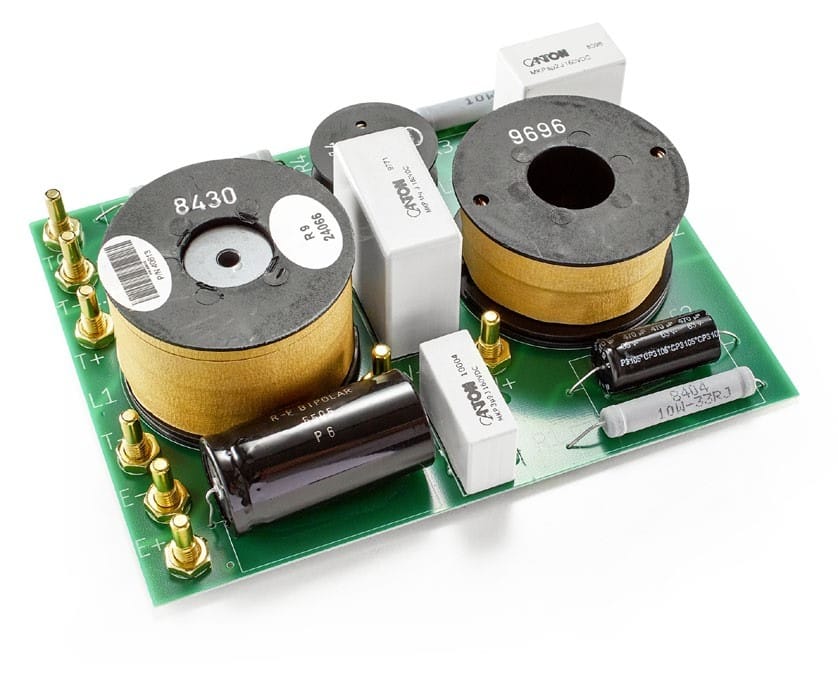
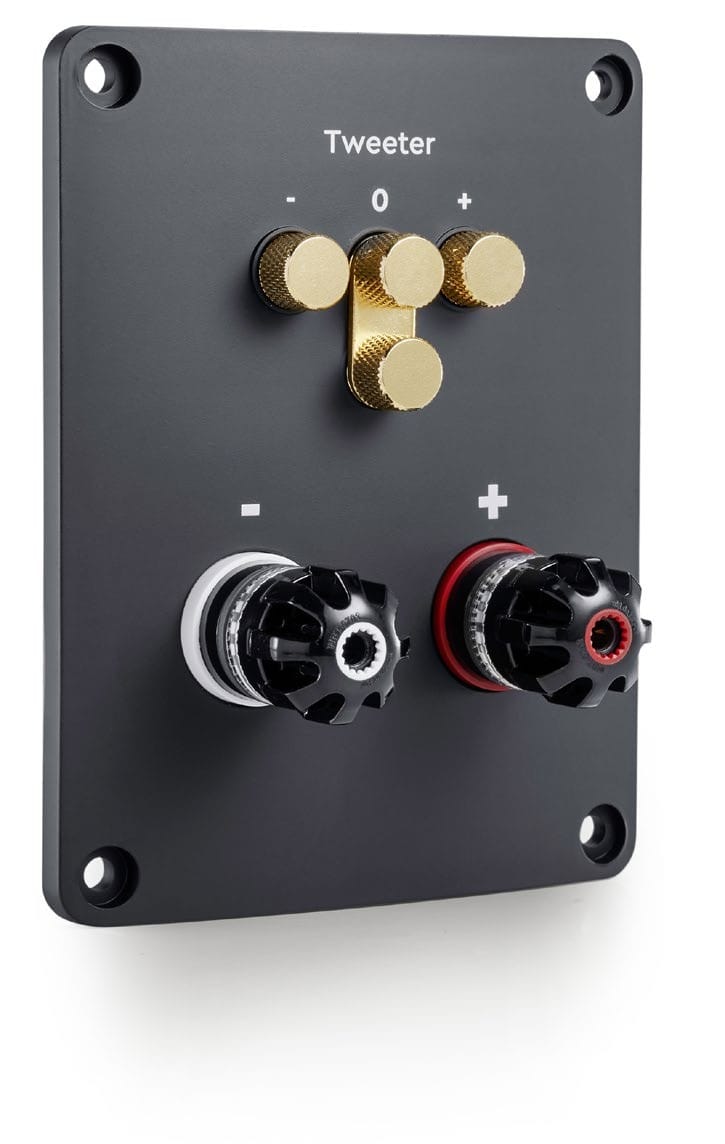
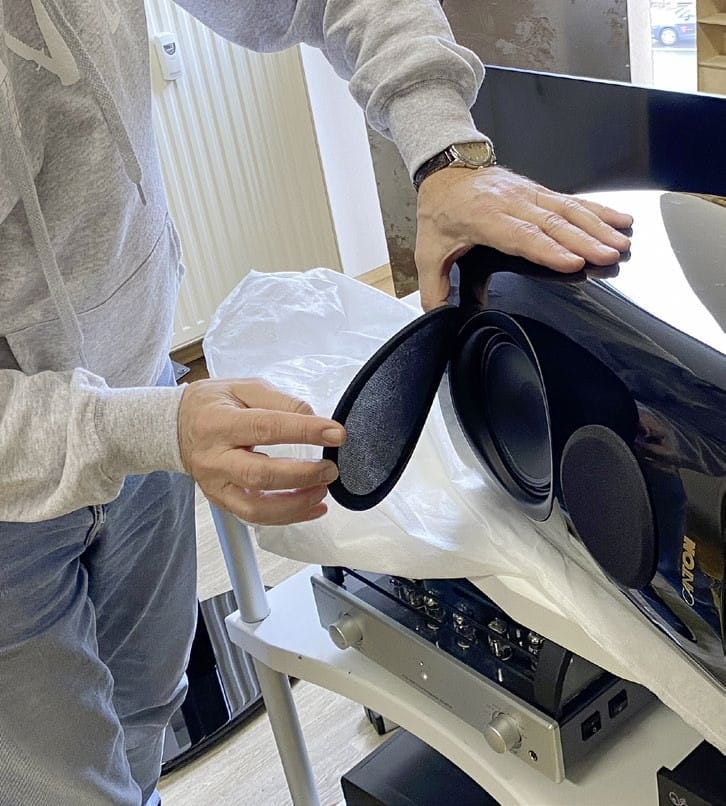
A quick look at the back before we move to the sound description: the rear features a high-quality single-wiring terminal with WBT-Nextgen connectors and an area for fine-tuning the high frequencies.
TEST DEVICES
Streamer / D/A Converter: Eversolo DMP-A8
Integrated Amplifier: Moonriver 404, Audionet Watt, Exposure 3510
CD Player: Musical Fidelity M3scd
Accessories / Cables: Audioquest, Cardas, In-Akustik, Silent Wire, Creaktiv
Setup: Extremely Easy
For our listening sessions, we used stands developed specifically for the Reference 9, positioning the speakers in the room with about 70 cm of space on all sides.
Even with the affordable Exposure integrated amplifier (see “Test Devices” above), the Reference 9 proved it is much more than just another competitor in the under $4,400 price range.
We expected it to handle dynamic shifts and subtle volume nuances well, which it did impressively. However, its capabilities go beyond that, positioning it confidently among more expensive audiophile speakers, offering a remarkable combination of Canton craftsmanship and sound quality.
Its emotional expression is undeniable. When listening to Verdi’s “Rigoletto,” the Reference 9 captures vocal details and conveys the mood convincingly. The stage presentation is expansive, extending beyond the speakers’ positions while maintaining solid focus and depth.
If you prefer more mainstream music, the Reference 9 breaks stereotypes by delivering rock music powerfully and with impact.
Rock Music from a Small Speaker
We tested AC/DC’s “For Those About To Rock (We Salute You).” The Reference 9 quickly builds a compelling sound that makes you eagerly anticipate each note, capturing the raw energy and detail of the music beautifully.
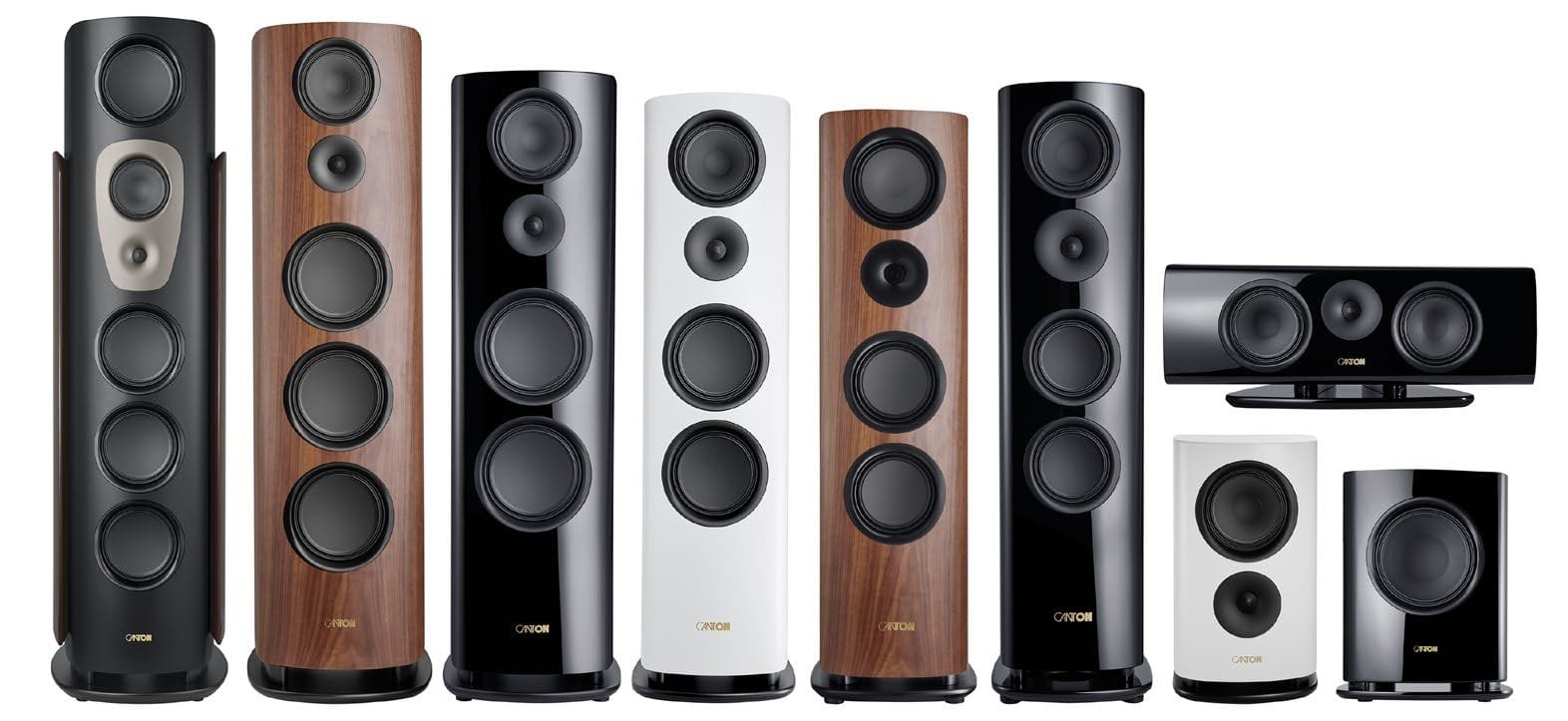
Deep Tones Without Boominess
Long bass notes from organs and double basses can be tricky, often causing room boom or losing character. The compact Reference 9 handled these challenges well, highlighting its long-lasting qualities even compared to more expensive models.
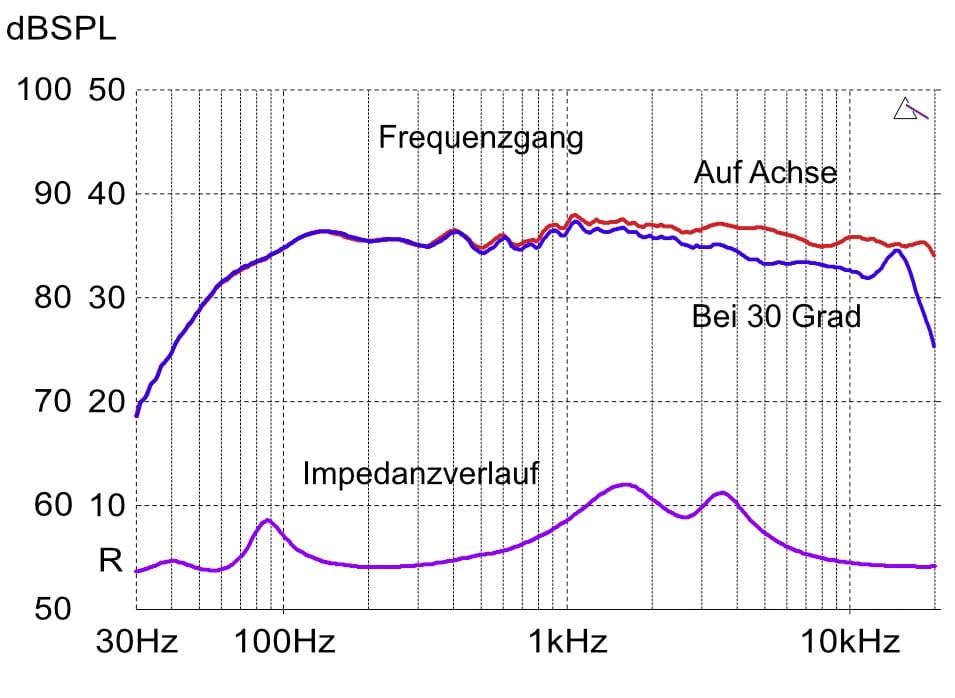
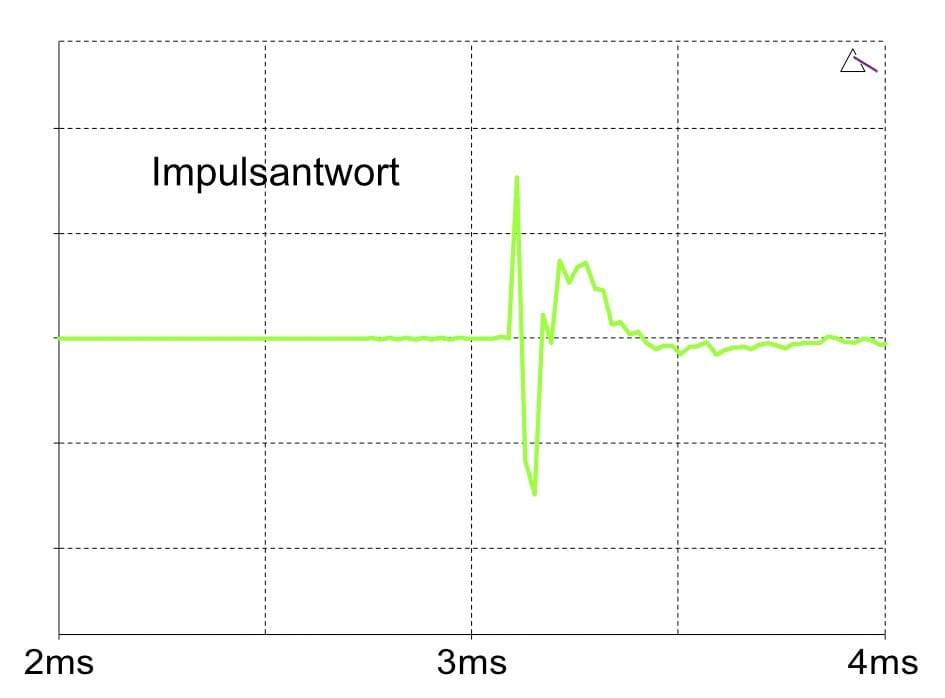

The Reference 9, despite its moderate size and fair pricing, delivers all-round sound quality, impressive volume, and craftsmanship rarely seen in its price range, making it a clear value for money and a visual delight on any stand.
WE LISTENED WITH
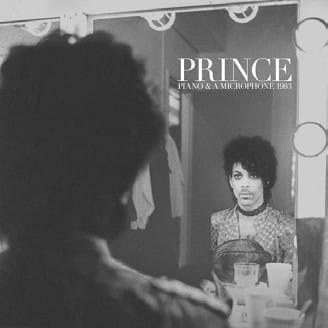
PRINCE: PIANO & A MICROPHONE Intimate, direct, and captivating—just Prince and the piano.
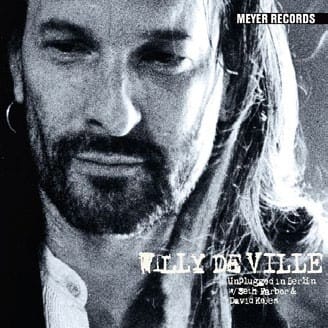
WILLY DEVILLE: UNPLUGGED IN BERLIN The last live recording of the late American artist in top-notch sound quality.
Specs
- Product / Price Category: Compact speaker / $2,200 to $4,400
- Price in Euro: 3,600
- Dimensions (W x H x D) in cm: 26 x 45 x 39
- Weight in kg: 18
- Design: Dynamic, 2-way, bass reflex
- Terminal: Single-wire
- Recommended Setup Info: At least 20 cm distance from all walls, slightly angled
Verdict
| Sound Quality | |
|---|---|
| KLANG (Sound) | 60% – Good (8.3/10) |
| Sound Characteristics | Dynamic and lively, with fine, effortless resolution, deep-reaching, and well-defined bass for its size |
| Measurements | |
| Frequency Response | Very balanced |
| Sound Pressure Level (in Decibel) | Very good (8.9/10) |
| Impulse Response | Very good (8.9/10) |
| Minimum Impedance | Unproblematic |
| Distortion at 63 / 3k / 10k Hz | Slightly high (1.05 / 0.051 / 0.11) |
| Compatibility | Very simple |
| Features & Handling | |
| Setup | Very simple (9.6/10) |
| Manual Quality | Good (8.3/10) |
| Initial Setup | Very simple (9.6/10) |
| Sound Adjustment Possible | Yes |
| Cabinet Finishes | Matte white, walnut, high-gloss black |
| Included Accessories | Grille, spikes |
| Haptics / Processing | Very good (9.6/10) |
| Service & Environment | |
| Warranty in Years | 10 |
| Packaging | Cardboard and plastic |
| Upgradeable | No |
| Overall Test Result | |
| Final Score | Good (8.3/10) |
Canton Reference 9 K (english Version)
They look small. They act big. At the same time they know what it's all about: a balanced sound potential and the ability to create ...



